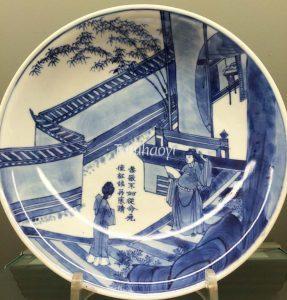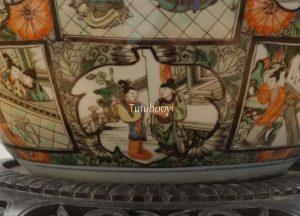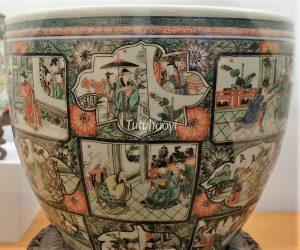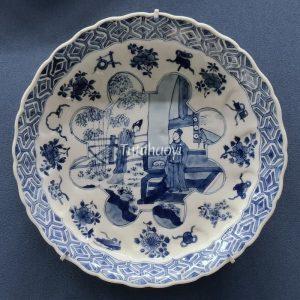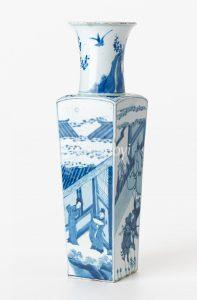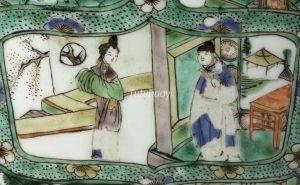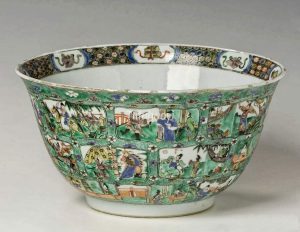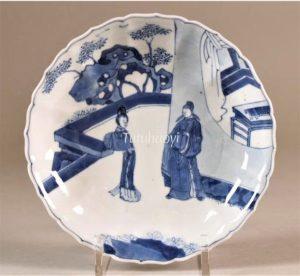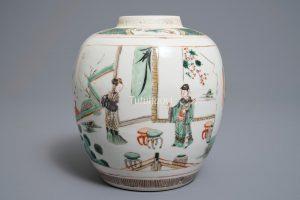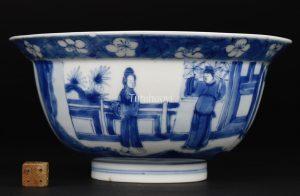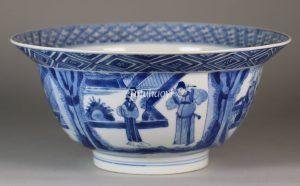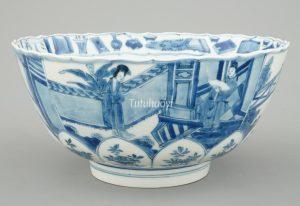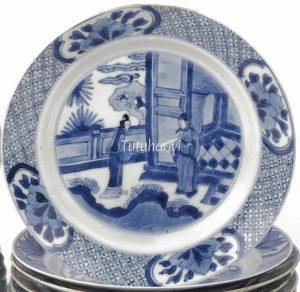Hongniang’s Banquet Invitation
红娘请宴
© Tutuhaoyi.com owns the copyright of the description content for the images attached. Quoting all or part of the description content on this page is permitted ONLY IF ‘Tutuhaoyi.com’ is clearly acknowledged anywhere your quote is produced unless stated otherwise. (本页描述内容版权归Tutuhaoyi.com所有,转发或引用需注明 “Tutuhaoyi.com”, 侵权必究, 已注开源信息的条目除外。)
This is Scene Two of Act Two of the Chinese classic drama Romance of the Western Chamber (西厢记 Xixiang Ji), written by the Yuan playwright Wang Shifu (1250–1336).
In the preceding chapters, the local bandit Sun Feihu had besieged the monastery, intending to seize Cui Yingying by force. In response, Zhang Gong 张珙 (styled Junrui 君瑞, also known as Scholar Zhang 张生) sought the help of his friend, General White Horse Du Que, who successfully defeated Sun Feihu and lifted the siege. Having benefited from Scholar Zhang’s efforts, Madame Cui decided to host a banquet to express her gratitude.
Overjoyed, Scholar Zhang believed that Madame Cui would honour her previous promise—made before the battle—to betroth him to Miss Cui Yingying 崔莺莺, her beautiful daughter, whom he had long admired. Rising early, he dressed meticulously, eagerly awaiting an invitation from Yingying’s maid, Hongniang 红娘.
Hongniang, too, found Scholar Zhang intelligent, refined, and deeply devoted to Yingying, believing they were a perfect match. When Scholar Zhang hesitated, worrying that he had no betrothal gifts to offer Madame Cui, Hongniang reassured him. She explained that since he had rendered a great service by repelling the bandits, Madame Cui was truly grateful. The banquet was an intimate gathering, with no unrelated monks invited—only Scholar Zhang himself. Therefore, there was no need for him to decline, as ancient wisdom states: ‘Respect is best shown through action (恭敬不如从命)’. (See example in the first image with Chinese characters written in the centre of the dish). Scholar Zhang should simply attend the banquet without hesitation.
story scene description by Rachel Ma
See all episodes here: Romance of the Western Chamber
Fig 1: porcelain dish with underglaze blue decoration, late Ming – early Qing dynasty, courtesy of Sir Michael Butler Collection
Fig 2-3: porcelain jar with overglaze enamelled decoration, Kangxi period (1662–1722), Qing dynasty, courtesy of The Guimet Museum, Paris; photo: Raid Kneife
Fig 4: porcelain dish with underglaze blue decoration, Kangxi period (1662–1722), Qing dynasty, courtesy of the Shanghai Museum, China; photo: Rachel Ma
Fig 5: porcelain vase with underglaze blue decoration, Kangxi period (1662–1722), Qing dynasty, courtesy of the National Gallery of Victoria, Melbourne; Photo: National Gallery of Victoria, Melbourne, Australia
Fig 6-7: porcelain bowl with overglaze enamelled decoration, Kangxi period (1662–1722), Qing dynasty, courtesy of Groninger Museum, Groningen, The Netherlands
Fig 8: porcelain dish with underglaze blue decoration, Kangxi period (1662–1722), Qing dynasty, courtesy of Princessehof Ceramics Museum, Leeuwarden, The Netherlands
Fig 9: porcelain jar with overglaze enamelled decoration, Kangxi period (1662–1722), Qing dynasty, courtesy of Rob Michiels Auction House, 6 Oct 2018
Fig 10: porcelain bowl with underglaze blue decoration, Kangxi period (1662–1722), Qing dynasty, courtesy of the Robert McPherson Antiques, The Netherlands, archived item
Fig 11: porcelain bowl with underglaze blue decoration, Kangxi period (1662–1722), Qing dynasty, courtesy of Guest & Gray Antique Dealer, London
Fig 12: porcelain bowl with underglaze blue decoration, Kangxi period (1662–1722), Qing dynasty, courtesy of the Marc Michot Gallery, Bruges, Belgium
Fig 13: porcelain dish with underglaze blue decoration, Kangxi period (1662–1722), Qing dynasty, courtesy of the Christie’s Auction House, Amsterdam, 27 March 2013, Lot 264
